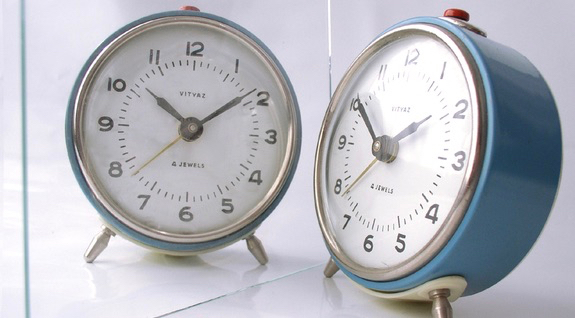The notion that we attract who we are and how we walk in the world perhaps has some merit, but the concept misses some important markers.
Deep within us lies an abiding place: One full of creativity, joy, dreaming. But also with deep relational hopes, losses, pain and longings. Longings connected to the pain of lost relationships — due to an early demise, rejection or an absence.
The new-age idea at the heart of the Law of Attraction is we somehow attract those who reflect the state of our existence. If we are attract those who harm us and devalue us, then we are reflecting lesser aspects of who we are, or even inferior parts of ourselves. With a course correction, we will view ourselves (and be viewed in) a more valuable and worthy light. Sounds simple, doesn’t it? Think again.
Perhaps we attract those who represent wounds and losses from our past.
The Law of Attraction principle appears to obfuscate more complex deeper layers of our relational lives.
The notion that if we were good enough, strong enough, evolved enough we would attract more positive, healthier, happier more purpose-filled relationships — reflecting our inherent worth, sense of security, strength and worthiness — just misses the mark.
Echoes of …
- “Why is she hanging out with her or him? He’s such a loser.”
- “Of all the people he could have married her picked her.”
- “She is such a *** ” (you fill in the gap).
Sound familiar? Yet, what is missing — or perhaps overlooked — as we seek the very “best” people in our lives are hidden complex feelings and yearnings that lure us in other directions. For reasons that are not immediately obvious, but actually make sense.
This dynamic draws into our lives the “wrong types,” resulting in disapproval and disbelief in the eyes of others … and perhaps even ourselves. This is our deep-seated attempt to right the wrong and heal old wounds.
The law of attraction and unintended consequences
Just for a moment, consider those you have attracted on the highway of relationships over your lifetime. Some treated you well; others treated you less than well. Some abused you. Yes? Consider why this may be the case.
Some of these individuals may trigger unconscious memories of significant relationships from the past in which you were let you down, suffered pain or fear, or even experienced simultaneous joy and pain. However buried in your unconscious, these relationships leave a legacy of longing for intimate relational connections and experiences. Perhaps in many ways this is true for everyone. Ever present is a human yearning for deeper connections. These yearnings can lead to painful ruptures as we seek restoration in our adult lives.
Replicas of painful relationships and unexpected backlashes
On one hand, it makes sense to be drawn to those who have caused us pain. We are drawn to find ways to heal and restore old wounds in present relationships.
Mary Solo meets John Brown. He reminds her of her distant, unemotional father. Unconsciously she is intrigued. He has such a familiar way; she is drawn to him. The painful feeling of his aloofness and distance are so familiar, almost painfully comfortable. She tells herself that this time, “I will make this relationship work.” Mary herself will be different, she will change his aloofness and become the heroine of her story. This tells Mary she can make an aloof, distanced personality love her. This journey with this look-alike person, with all her effort (not his, of course) will confirm to her that she is now lovable. (This is all unconscious or prereflective.)
Contrary to the Law of Attraction theory, we are not drawn to intentionally harm ourselves or stay “stuck.” In fact, we actually attempt to heal the past. What is unrecognized is that the unconscious draw to heal the past builds a painful trap of the present.
Danger on the highway
The problem is clinging to an illusion that someone else has the power to define our worth or our lovableness.
Attempting to heal old painful relationships with look-alike people — especially those who are not on a path of growth or development — inevitably results in disappointment. Sadly, these relationships often turn out to create far worse or more painful experiences than the original wound. How can this be? The pull to seek new relationships in order to heal old wounds from our parents, caregivers, siblings, lovers is far stronger than imagined. It is an unseen powerful force. If awareness is lacking, this black-hole effect can last a lifetime. A never-ending cycle of “trauma repetition.”
Continuing on this path causes more pain, despite the best of intentions.
Course-correcting
What heals the wounds of the past is committed growth. There is no magic involved. Hard work is required. Developing the capacity to self-reflect, to face past painful experiences and to slowly but surely begin to see in the mirror a person deserving of more than just “settling” for mediocre love.
Recognizing that daily healing requires daily kindnesses — both giving and receiving empathy, compassion, wisdom and common sense.
Reminding yourself that enduring relationships are built on greater sustainable kindnesses and open vulnerable communication. Relationships in which trust is built incrementally, with authentic mutual commitments from both parties.
With these ongoing awareness and gentle reminders, perhaps a natural law may come into play — one including compassion and understanding. One that reminds of where you have come from … and where you are going.
An ongoing attempt to heal via more efficient tools and skills that guide you in a direction of a personal consciousness. A law promoting a commitment to self-love that extends to love of others. As both parties come together with newly discovered conscious values.
